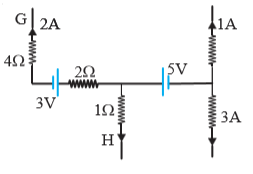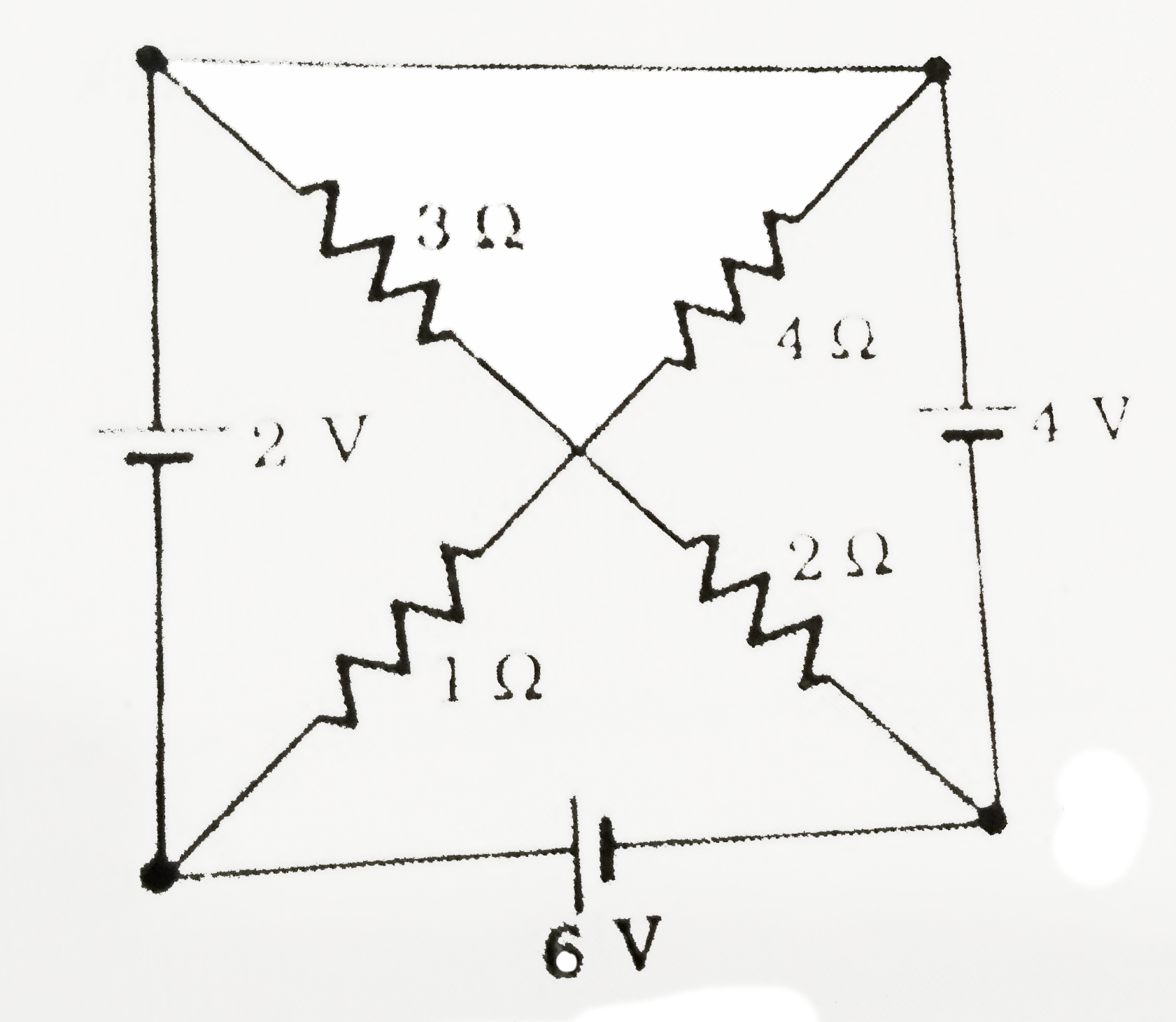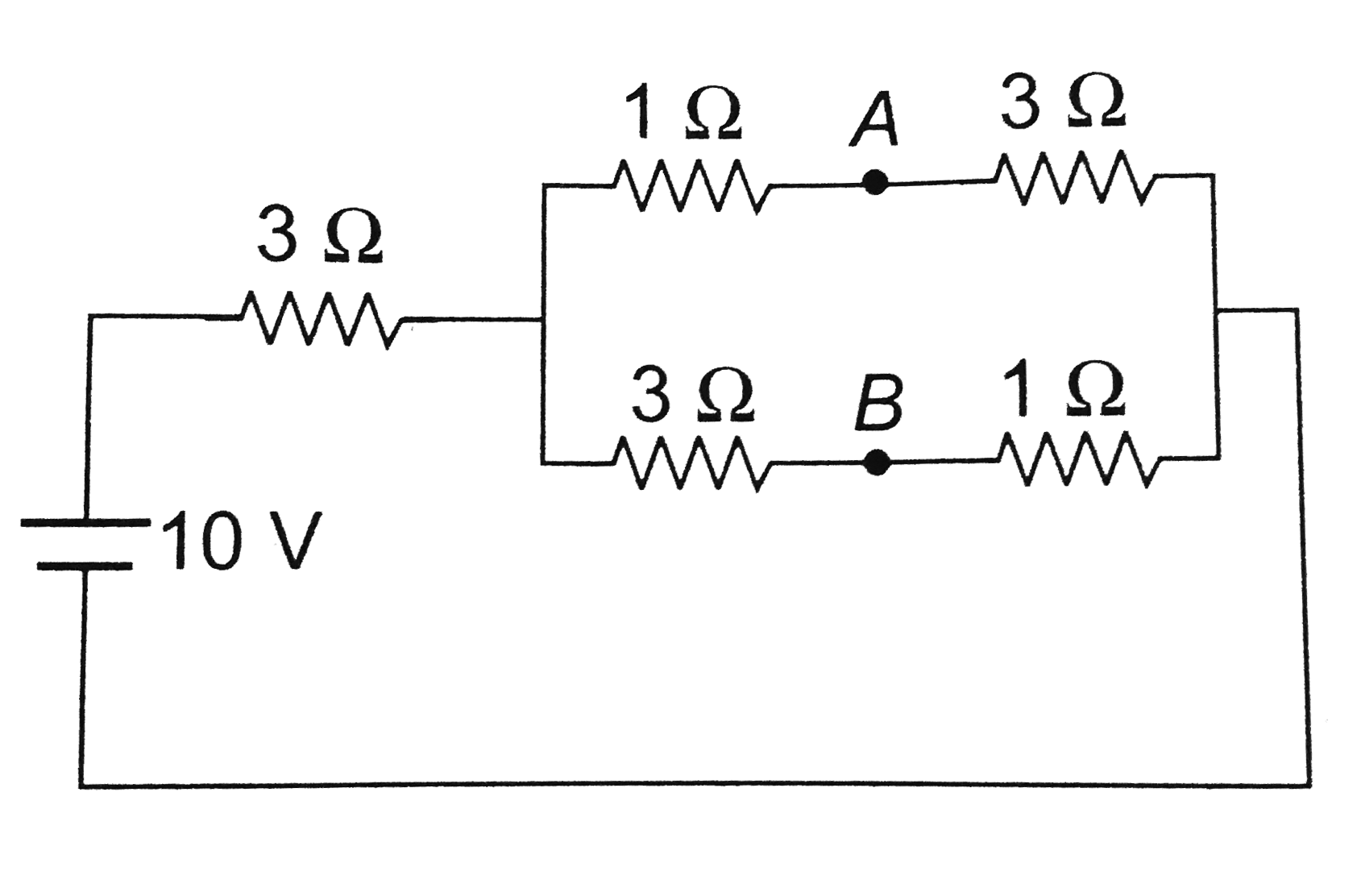Resistances of 6 ohm each are connected in the manner shown in adjoining figure. With the current 0.5 ampere as shown in figure, the potential difference VP−VQ is

3.6V
6.0V
3.0V
7.2V
The correct Answer is:C
Step by step video, text & image solution for Resistances of 6 ohm each are connected in the manner shown in adjoining figure. With the current 0.5 ampere as shown in figure, the potential difference V_(P) - V_(Q) is by Physics experts to help you in doubts & scoring excellent marks in Class 12 exams.
Updated on:21/07/2023Topper's Solved these Questions
- CURRENT ELECTRICITYBook:ERRORLESS Chapter:CURRENT ELECTRICITYExercise:Kirchhoff s Law, cells
Explore 8 Videos
- CURRENT ELECTRICITYBook:ERRORLESS Chapter:CURRENT ELECTRICITYExercise:Different Measuring Instruments
Explore 1 Video
- COMMUNICATION SYSTEMBook:ERRORLESS Chapter:COMMUNICATION SYSTEMExercise:S E T
Explore 14 Videos
- ELECTRO MAGNETIC INDUCTIONBook:ERRORLESS Chapter:ELECTRO MAGNETIC INDUCTIONExercise:SET
Explore 20 Videos
Similar Questions
Knowledge Check
Resistances of 6 ohm each are connected in the manner shown in adjoining figure. With the current 0.5 ampere as shown in figure, the potential difference VP−VQ is
 A3.6 VB6 VC3 VD7.2 V
A3.6 VB6 VC3 VD7.2 VIn the part of a circuit shown in figure, the potential different
(VG−VH) between points G A0VB15VC21VD3V
A0VB15VC21VD3VIn the part of a circuit branch shown in figure-5.304 the potential difference Vab at t=1s is:
 A30VB−30VC20VD−20V
A30VB−30VC20VD−20V

In the network shown in figure. (i) calculate the current of the 6V battery and (ii) determine the potential difference between the points A and B.
View SolutionIn the circuit shown in figure ,
a. find the current is each branch
b. find the potential difference Vab of point a relative to point b.
View SolutionSix resistance are connected as shown in figure. If total current flowing is 0.5A, then the potrential difference VA−VB is

View SolutionTwo capacitors C1 and C2 are connected in a circuit as shown in figure. The potential difference (VA−VB) is

View SolutionA battery of e.m.f. 10V is connected to resistance as shown in figure. The potential difference VA−VB between the point A and B is

View Solution



